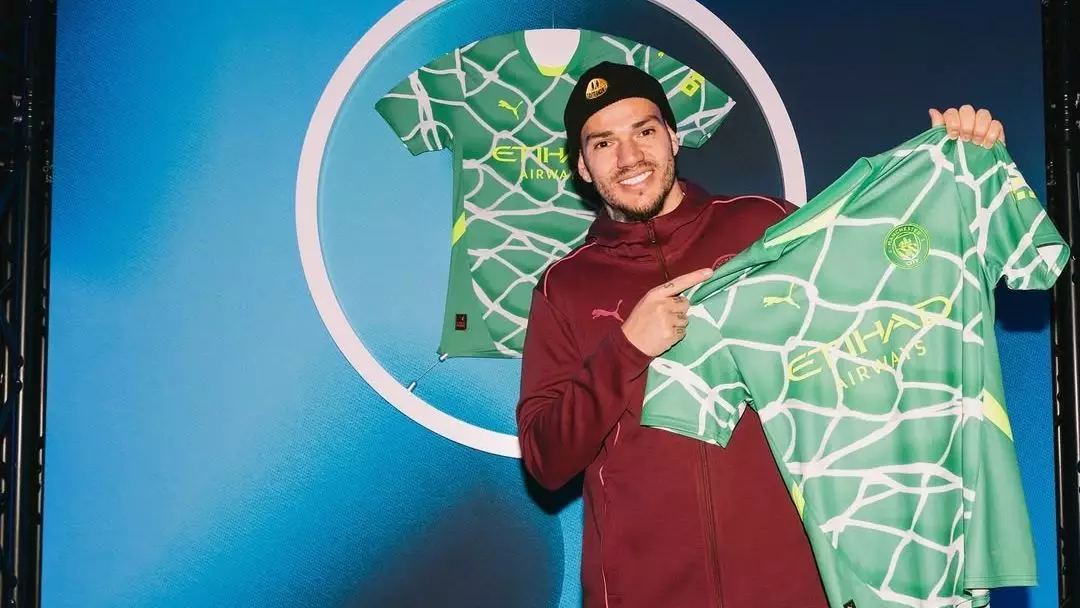In an unprecedented period for Manchester City, where the team finds itself grappling with an unusual string of disappointing results, the club has launched an innovative initiative to engage its supporters. As holiday cheer slumps under the weight of recent performances, City has collaborated with Puma to create a unique fan-driven contest that invites Cityzens to design the third kit for the 2026-27 season using an AI image generation tool. While the initiative has its merits, it also raises questions about authenticity, commercialization, and fan involvement in football culture.
The partnership between Manchester City and Puma incorporating AI technology speaks volumes about the melding of modern innovation with traditional sporting culture. Using a text-to-image AI generator, fans can create unique designs for the team’s third kit. At its core, this enterprise aims to harness the creativity of fans, allowing them to express their passion for the club through a tangible medium. While this bridges the gap between the club and its supporters, it is essential to dissect the larger implications of involving AI in creative processes traditionally reserved for human artists.
The AI tool, developed by DeepObjects, claims to be pioneering a decentralized design platform. However, such reliance on AI for creative outputs leads to unavoidable philosophical and ethical questions. Critics often voice concerns regarding the datasets these AI systems learn from, typically composed of existing art and designs. This brings forth a significant concern about originality and intellectual property rights—issues that could overshadow the creative freedom the contest ostensibly offers.
While the competition is marketed as a means of engaging fans, more cynical observers may interpret it as a veiled form of exploitation. By having fans generate potential designs, Manchester City and Puma could be seen as outsourcing creative labor while profiting from their engagement. The fine print of the agreement clarifies that both Puma and Manchester City reserve the right to modify any design produced, raising further questions about how much creative control fans truly possess.
Additionally, despite the promise of exciting new designs, the generator’s functionality can be less than intuitive. Users have shared experiences of the AI producing unexpected results that often veer away from their original prompts. For instance, attempts to infuse specific cultural references often resulted in designs that bore little resemblance to the intended inspiration. This inconsistency may lead to frustration among fans as they attempt to translate their vision into AI-generated imagery.
Despite its limitations, the design contest is structured to provide ample opportunities for creativity. Participants start with 15 Design Credits, which they can use to create prompts. Each generated prompt yields multiple variations, allowing for substantial experimentation. The limitations—such as only two official entries per participant—can be counteracted by engaging with and reviewing other designers’ creations to earn additional credits.
The contest culminates in a shortlist determined by both community votes and professional evaluations from Manchester City and Puma representatives. This duality aims to balance fan engagement with expert insight, ensuring that the final choices reflect both popular sentiment and professional standards. However, determining the “best” designs remains subjective, and the potential influence of community biases will be an important aspect to observe as the contest unfolds.
The process is framed as a progressive leap towards merging technology with traditional fan experiences. Ivan Dashkov of Puma emphasizes that the kit creator is about bridging emerging technology and fan engagement. Yet, the extent to which this venture genuinely enhances the fan experience remains to be seen.
As the voting phase approaches in January 2025 and fan designs prepare to materialize on the pitch, the anticipation creates a buzz around the contest. Nevertheless, for many, the ultimate litmus test will be the final design’s aesthetic appeal and cultural resonance. Will fans embrace the collaborative process, or will it become a moment of reflection on the commercialization of creative spaces within sports?
In the end, while the initiative seeks to draw Cityzens closer to the football club they cherish, the complexities of AI’s involvement and the commercialization of fan creativity present a nuanced landscape that demands further exploration. The hope remains that in 2026-27, the winning kit transcends any controversies to become a proud emblem of both artistry and collective fandom.

